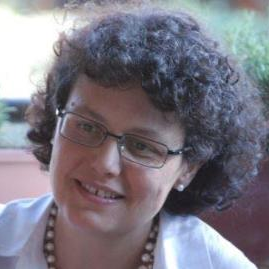Product Development in Net-Shape Metal Powder Technologies
A special issue of Metals (ISSN 2075-4701). This special issue belongs to the section "Powder Metallurgy".
Deadline for manuscript submissions: closed (30 April 2022) | Viewed by 11494
Special Issue Editors
Interests: design methods for powder metallurgy; pressing and sintering; binder jetting; powder behavior in compaction; dimensional change on sintering; geometrical tolerances application and verification
Interests: Binder jetting; Functional sintered ceramics; Sintering; Microstructural characterization of metals and alloys; Surface treatments and wear; Shape memory alloys
Interests: mechanical design; structural mechanics; strength of materials; finite element modeling; fatigue; fracture mechanics; biomechanics
Special Issues, Collections and Topics in MDPI journals
Special Issue Information
Dear Colleagues,
Metal powder net-shape and near net-shape technologies are increasingly generating interest, as they allow producing parts as close as possible to their final shape, eliminating or reducing secondary operations, and consequently reducing scrap, costs, time to market, and the environmental impact. Among them, press and sinter, metal injection molding, and recently, metal additive manufacturing are attractive to a huge market. Nevertheless, the specific characteristics of such technologies must be carefully considered, aiming at best exploiting the benefits. The well-known product development process, which implies the consideration of the synergistic influence of the material, shape and production process in a collaborative environment, is a crucial and difficult task when dealing with such technologies. Metal powders for conventional powder metallurgy strongly differ from metal powders for additive manufacturing, and their characteristics may dramatically affect the properties of final parts. The inappropriate definition of the process parameters inevitably introduces defects in the part at a geometric and microstructural level that detrimentally affect its functioning in operation and its structural reliability. The shape of products must be optimized according to the peculiarities of the technology. Moreover, aiming at obtaining parts as close as possible to their final shape, dimensional and geometrical control is a crucial aspect to be considered in the design step. Depending on the technology, the designer must consider the influence of many different variables, both related to modeling platforms and to process parameters. In addition, the parameters of the metallurgical process must be carefully defined, since they strongly affect the final microstructure and the onset of distortions, residual stresses and different types of localized or diffuse defects.
This Special Issue invites papers concerned with product development in net-shape and near net-shape metal powder technologies from different points of view, considering the whole life-cycle of the products, and the need for collaboratively evaluating the many different variables affecting the characteristics of the final product.
Prof. Dr. Ilaria Cristofolini
Prof. Dr. Nora Lecis
Prof. Dr. Vigilio Fontanari
Guest Editors
Manuscript Submission Information
Manuscripts should be submitted online at www.mdpi.com by registering and logging in to this website. Once you are registered, click here to go to the submission form. Manuscripts can be submitted until the deadline. All submissions that pass pre-check are peer-reviewed. Accepted papers will be published continuously in the journal (as soon as accepted) and will be listed together on the special issue website. Research articles, review articles as well as short communications are invited. For planned papers, a title and short abstract (about 100 words) can be sent to the Editorial Office for announcement on this website.
Submitted manuscripts should not have been published previously, nor be under consideration for publication elsewhere (except conference proceedings papers). All manuscripts are thoroughly refereed through a single-blind peer-review process. A guide for authors and other relevant information for submission of manuscripts is available on the Instructions for Authors page. Metals is an international peer-reviewed open access monthly journal published by MDPI.
Please visit the Instructions for Authors page before submitting a manuscript. The Article Processing Charge (APC) for publication in this open access journal is 2600 CHF (Swiss Francs). Submitted papers should be well formatted and use good English. Authors may use MDPI's English editing service prior to publication or during author revisions.
Keywords
- Metal powder production and characterization
- Development of new metal powder mixes
- Modeling architectures and knowledge-based systems
- Topological issues and shape optimization
- Methods and tools, considering the characteristics of the specific production processes in the different steps of the design process
- Simulation and experimental verification of the influence of design–process parameters on the geometric, microstructural and mechanical characteristics of the final parts
- Verification of the dimensional and geometric characteristics, by both contact and contactless techniques
- Experimental investigation of the structural reliability of the components
- Lifecycle and environmental concerns
Benefits of Publishing in a Special Issue
- Ease of navigation: Grouping papers by topic helps scholars navigate broad scope journals more efficiently.
- Greater discoverability: Special Issues support the reach and impact of scientific research. Articles in Special Issues are more discoverable and cited more frequently.
- Expansion of research network: Special Issues facilitate connections among authors, fostering scientific collaborations.
- External promotion: Articles in Special Issues are often promoted through the journal's social media, increasing their visibility.
- e-Book format: Special Issues with more than 10 articles can be published as dedicated e-books, ensuring wide and rapid dissemination.
Further information on MDPI's Special Issue polices can be found here.







